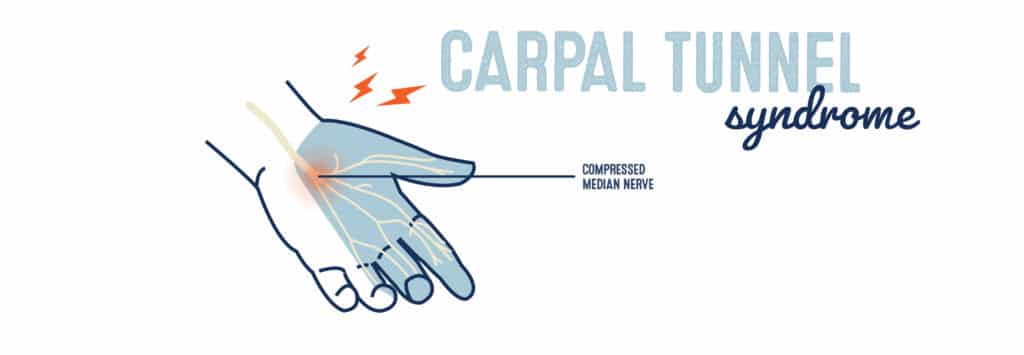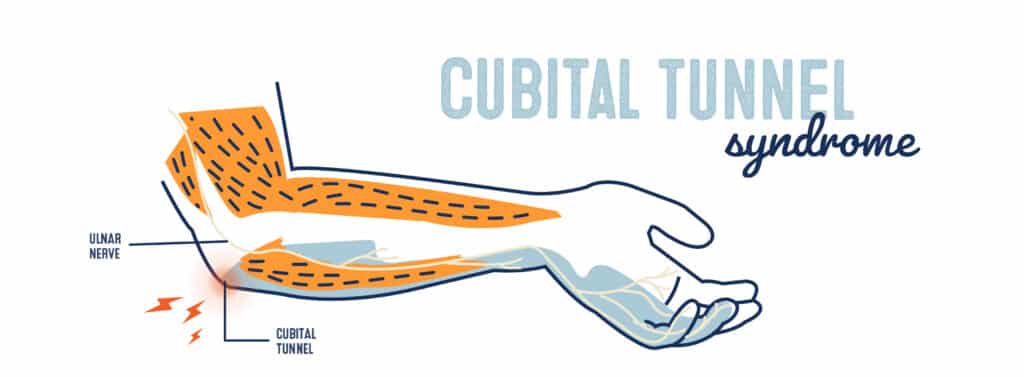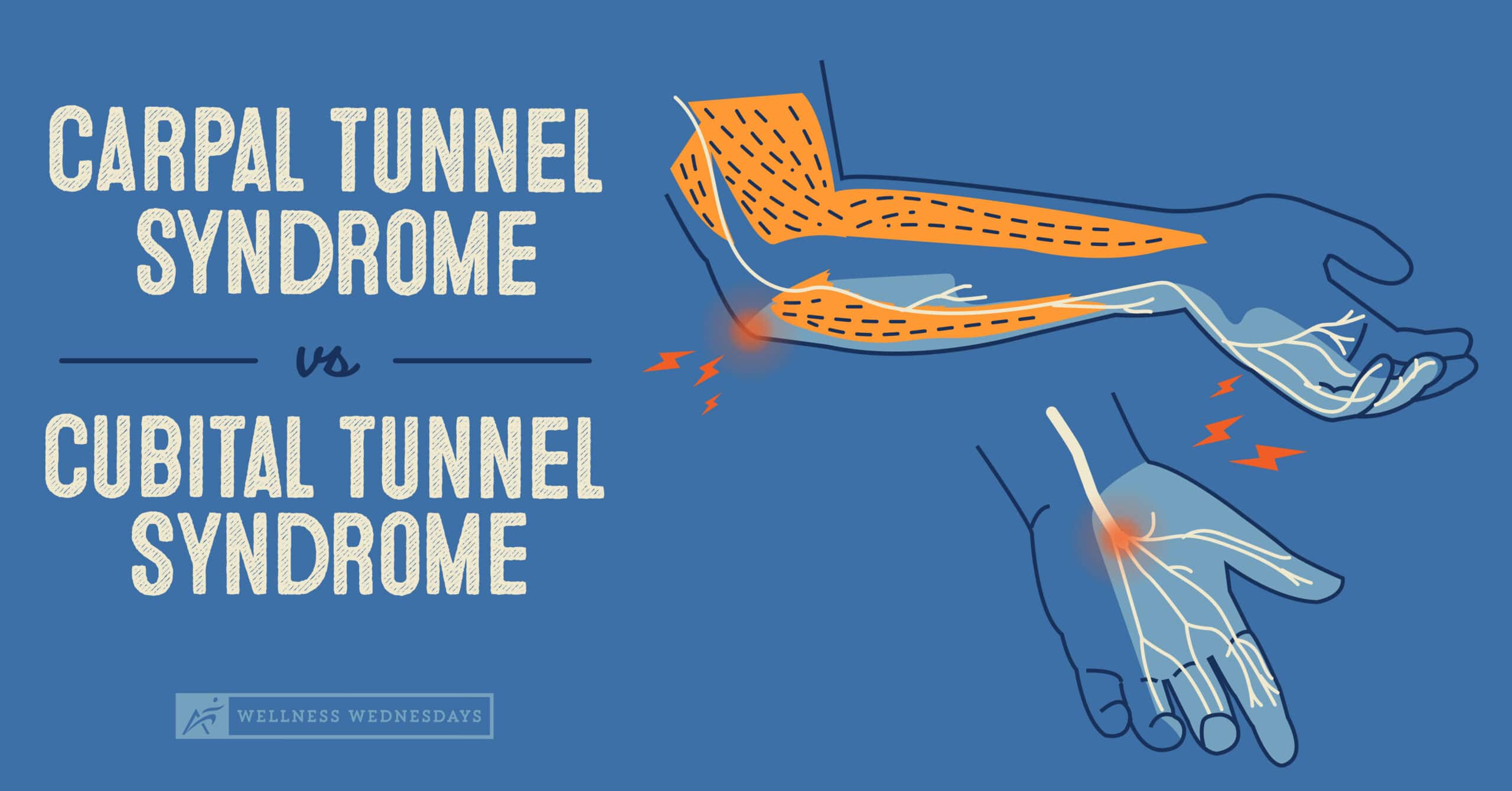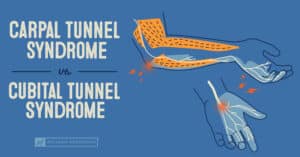Carpal tunnel syndrome and cubital tunnel syndrome are both nerve conditions that affect the arms, hands, and wrists. Despite their similar names and cause (nerve irritation or compression), these injuries are not the same. Learn how to distinguish these two wrist conditions, and what treatment options may help!
Carpal Tunnel Syndrome Vs. Cubital Tunnel Syndrome
Carpal tunnel syndrome and cubital tunnel syndrome are both known to cause wrist pain, weakness, numbness, and loss of function in the hands and fingers. These injuries can limit your mobility and keep you from doing even simple activities like driving, typing, or holding a toothbrush.
Treating these conditions conservatively can be difficult without knowing which condition you’re dealing with. The location of the injury, presentation of symptoms, and ideal treatment methods depend on the diagnosis. Receiving a proper diagnosis is key to finding the right treatment for your condition.
Location Of Injury
Carpal tunnel syndrome is caused by compression of the median nerve within the carpal tunnel, located at the base of the wrist. The median nerve branches from the wrist into the thumb, index, middle, and part of the ring finger.

Cubital tunnel syndrome is caused by compression of the ulnar nerve at the base of the elbow. The ulnar nerve travels down the arm and into the hand, branching into the ring and little finger.

Symptoms
While both injuries can cause arm, hand, and wrist pain, symptoms can vary depending on which nerve is compressed.
Carpal Tunnel Syndrome:
- Symptoms are more likely to affect the wrist and first three fingers of the hand.
- Symptoms often appear as numbness, tingling, wrist pain, and hand or grip weakness.
- Carpal tunnel may have several causes, such as wrist fractures, arthritis, or repetitive wrist movements that cause strain.
Cubital Tunnel Syndrome:
- Numbness, weakness, and tingling may be present in the ring and little finger.
- Pain is often present in the elbow and symptoms may worsen when the elbow is bent.
- It may occur due to frequent pressure on the elbow (such as leaning on it), repetitive bending, a direct injury, or anatomical factors.
Treatment Options
Making minor adjustments to your daily habits or activities can significantly alleviate wrist discomfort over time. Typically, resting the affected arm is the primary recommendation for managing pain. Additionally, anti-inflammatory medications or injections are commonly prescribed to alleviate pain. While these treatments may relieve symptoms, they may not target the root cause of the pain.
In severe cases, your doctor may recommend surgery to relieve pressure on the affected nerve. Surgery should be a last resort for treatment before exhausting more conservative or non-invasive options. You should always discuss treatment options with a healthcare provider.
Relieve Wrist Pain with Airrosti
If you suspect you may be suffering from carpal tunnel syndrome or any other related wrist pain injuries, schedule an appointment with an Airrosti Provider today!
At Airrosti, our Providers utilize hands-on manual therapy to address the root cause of pain, not just symptoms. In addition to receiving tools and education on your injury, your treatment and recovery plan will be tailored just to you.
For more information, call us at (800) 404-6050.
Read our Medical Disclaimer here.










